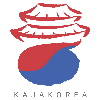Korean Lessons ᚛ Level 2 - Korean for Beginners #1 (Lessons 31 to 60) ᚛ Lesson 53 - The adjectival form for descriptive verbs
The adjectival form for descriptive verbs
Up till now, we've treated adjectives and verbs in the same manner. Nevertheless, in Korean, there is a distinction between:
- descriptive verbs, meaning verbs that are used to qualify or describe a noun, such as 예쁘다 (= to be pretty), 강하다 (= to be strong), 소중하다 (= to be precious), etc …
- action verbs, that is, verbs that express an action, such as 가다 (= to go), 먹다 (= to eat), 운전하다 (= to drive), etc …
In this chapter, we will study a form that is very important in the Korean language, which will be useful in many ways in the following chapters - the adjectival form. This is a verbal structure that transforms a verb into a form that qualifies a noun.
Even though up till now descriptive verbs and action verbs have had the same verbal endings, this is not the case for the adjectival form.
In this chapter, we're going to see how to use the adjectival form with descriptive verbs, while we will focus on the adjectival form with action verbs in the next chapter.
Qualify with a descriptive verb in the present tense
General rule
To qualify a person or thing using a descriptive verb, we proceed as follows:
- If the stem of the verb ends in a vowel: [Stem]ㄴ
- If the stem of the verb ends in a consonant: [Stem]은
The descriptive verb 예쁘다 (= to be pretty) has 예쁘, which ends in a vowel, as its stem. Therefore we add ㄴ.
- 예쁘다 → 예쁜 (= beautiful)
The descriptive verb 작다 (= to be small) has 작, which ends in a consonant, as its stem. Therefore we add 은.
- 작다 → 작은 (= small)
제주도에 그 높은 산 이름은 한라산입니다.
→ On the island of Jeju, the name of that high mountain is Hallasan.
그 아기는 큰 눈을 가졌어요.
→ This baby has big eyes.
요즘 바쁜 시기예요.
→ It's the busy season right now. (lit: These days, it's a busy time.)
강 깊은 곳까지는 안 들어갈 거예요.
→ I will not go to the deep spot of the river.
The stem ends in ㄹ
For descriptive verbs that have a stem that ends in ㄹ, the adjectival form is constructed in the following way:
Remove the final ㄹ, then add ㄴ, conforming to the rule for constructing the adjectival form.
The descriptive verb 길다 (= to be far) has 길, which ends in ㄹ, for its stem. The first step is to drop the final ㄹ of the stem, obtaining 기. Then we add ㄴ. So, the adjectival form of 길다 is 긴.
The descriptive verb 힘들다 (= to be tiring) has 힘들, which ends in ㄹ, for its stem. First we drop the final ㄹ from the stem, obtaining 힘드. Then we add ㄴ. So, the adjectival form of 힘들다 is 힘든.
The stem ends in ㅂ
For irregular descriptive verbs with a stem ending in ㅂ, the adjectival form is obtained in the following manner:
Drop the final ㅂ, then add 운.
The irregular descriptive verb 새롭다 (= to be new) has 새롭, which ends in ㅂ, for its stem. First, we drop the final ㅂ of the stem, obtaining 새로. Then we add 운. So, 새롭다 has 새로운 for its adjectival form.
The irregular descriptive verb 무섭다 (= to be frightening) has 무섭, which ends in ㅂ, for its stem. First, we drop the final ㅂ from the stem, obtaining 무서. Then we add 운. So, 무섭다 has 무서운 for its adjectival form.
The stem ends in ㅅ
Learn more
The stem ends in ㅎ
Learn more
Qualify with a descriptive verb in past and future tenses
Learn more
The case of 있다, 없다, and related adjectives
Learn more
Summary table of structure
Learn more
Exercises
Learn more
This printable eBook teaches you Korean writing and includes more than 1,000 Korean vocabulary words divided into 40 categories. Each word comes with audio pronunciation recorded by native Korean speakers (no AI)!
On top of that, you’ll also get access to an online vocabulary learning tool based on the scientifically proven Leitner spaced repetition method.
Learn more

